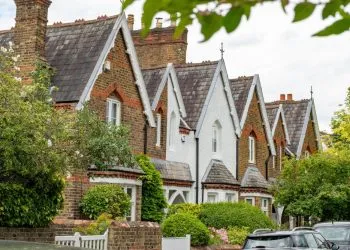House prices in major British cities has gone up by 9.2% since the start of the year, according to analysis by Halifax.
 Research by the bank found that increasing demand for homes in British cities was the driving force behind the rapid house price inflation witnessed earlier this year, with property prices in urban centres growing at a faster rate than their surrounding areas.
Research by the bank found that increasing demand for homes in British cities was the driving force behind the rapid house price inflation witnessed earlier this year, with property prices in urban centres growing at a faster rate than their surrounding areas.
The impact of the pandemic on people’s lifestyles had previously driven much stronger house price growth in suburban and rural areas, as buyers took part in the ‘race for space’, looking for bigger properties with more indoor and outdoor space. In contrast, built-up urban areas became less popular.
However, since the start of the year, as people returned to the office and life got back to normal after Covid, property prices in cities have grown by 9.2%, compared to 7.9% in surrounding areas.
While the picture still varies significantly in and around individual cities across the country, this suggests a shifting in homebuyers’ post-pandemic priorities.
Andrew Asaam, mortgages director at Halifax, said: “The pandemic transformed the UK housing market. Homeowners wanted bigger homes and better access to green spaces, fuelling huge demand for larger properties away from urban centres. This accelerated house price growth in the suburbs and more rural areas, while in cities it was much slower.
“That trend didn’t disappear completely this year, as house price growth in these areas remained strong. But, as daily life started to get back to normal for many, the opportunity to live in cities became more attractive again, driving up demand. There’s evidence of this in locations across the country, with property price inflation in the majority of cities outstripping increases in their surrounding areas.”
What’s happening around the country?
In the North West, the cities of Liverpool (+8.9%) and Manchester (+11.5%) have seen much stronger house price growth so far this year, with rises of 8.9% and 11.5% respectively, compared to their surrounding areas which have gone up 7.2% and 6.6%.
In Scotland, house prices in the city of Edinburgh have gone up 12.9% and those in Glasgow 8.5%. The cities’ surrounding areas have gone up 6.1% and 4.6% respectively.
In the capital, inner London boroughs have seen average property price growth of 6.8%, compared to 4.6% in the outer boroughs.
However, there are a few cities that have seen lower house price growth than their surrounding areas. Newcastle (6.4%) and Sunderland (5.3%) are seeing lower growth than their surrounding areas. South Tyneside leads the way for house price growth in the North East, up by 14% over the past nine months.
Likewise in Birmingham, where growth in the surrounding areas (9.4%) has been stronger than the city itself (8.6%) this year. This is reflected in places like Walsall, which has seen property price inflation of 16.4% over the same period.














